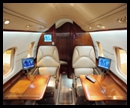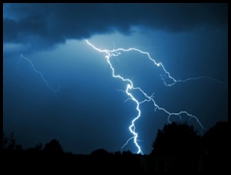EMA has over 30 years of experience in assisting aerospace manufacturers with certification and qualification in lightning, HIRF, and other EM environments. A summary of some recent projects follows.
Lightning Qualification of Regional Jet Aircraft A
EMA is currently involved in assisting a major regional jet manufacturer in qualification of their airplane to lightning for FAA and EASA. Our work has involved indirect effects modeling to determine the transients induced on avionics interfaces for qualification testing using EMA3D software tools. In addition, we have assisted in direct effects modeling of the wing fuel cell to prevent sparking and failure during a lightning event. Our work has resulted in a better design of the fuel cell system along with complete avionics pin transient levels for the downstream vendors.
Lightning and HIRF Qualification of Regional Jet Aircraft B
In a separate effort, EMA is on contract with the manufacturer of another regional jet aircraft in the qualification of their aircraft to both lightning and HIRF. Our work on lightning qualification involves simulating the indirect effects transients on all avionics interfaces. EMA is also performing EMA3D simulation of the entire aircraft to determine the conducted HIRF transients. In addition, EMA is performing simulation of the cockpit and avionics regions to determine the internal HIRF radiated threat in critical regions.
In addition EMA has been performing evaluations of HF antenna performance on carbon fiber aircraft.

Lightning Qualification of NASA's Crew Exploration Vehicle
The Crew Exploration Vehicle (CEV) is NASA's new human-spaceflight effort to take astronauts out of low-earth orbit to the moon and beyond. However, it must be qualified to the lightning and other EM environmental hazards in the same manner as commercial aircraft. EMA is currently on contract to Lockheed Martin for the development and qualification of the CEV in lightning and other EM environments.
EMA has prepared qualification plans for the lightning environment of the CEV during launch and reentry. EMA has assisted in developing the zoning and attachment locations for lightning. EMA has worked to aid designers and EMC engineers with simulation support to understand the actual transients that will be experienced in the lightning environment. In addition, we have worked to simulate the anticipated fields during lightning strikes at multiple vehicle locations and the lightning protection system at Kennedy Space Center. EMA has also determined the risk imposed by charging of the vehicle from space plasmas. In addition, we have worked on electromagnetic interference mitigation for the antennas on the craft.

Lightning and HIRF Qualification of Business Jet Aircraft
EMA is currently performing simulations to aid in the qualification of a business jet to lightning and HIRF. We are performing lightning indirect effects analysis to determine the transients induced on the avionics interfaces. In addition, we are helping aid the design of the lightning protection strips using simulations of each configuration to determine the best performance case. In addition, we are simulating the internal HIRF environment with respect to both conducted and radiated transients.
SAE Technical Committee AE-2 Lightning
The SAE Lightning committee addresses all facets of aircraft lightning strikes and its effects on aircraft-design, testing, measurement, procedures, and in-service experience.
Rod Perala was on the SAE AE2 from 1981 to 2001, where he helped to develop lightning qualification waveforms and standards that are in use today. Since 2001, Greg Rigden has been on the committee. He is now chairman of the environment subcommittee to update the lightning environment standards to conform to new research results.
In the 1980's, EMA played a major role in understanding and interpreting in-flight lightning data from the NASA F-106 and the NASA/FAA Convair 580 thunderstorm research projects. From this research, along with a parallel research program from the French C-160, the multiple burst and Waveform H environments were introduced into the lightning certification waveforms.
SAE Technical Committee AE-4R HIRF
The SAE HIRF committee addresses all facets of HIRF effects on aircraft-design, testing, measurement, procedures, and in-service experience. Rod Perala was on the SAE AE4R from its beginning in about 1986 until about 1996. This committee developed the original environments and certification approaches and test methods for HIRF certification. EMA also did some specialty tasks for the FAA related to HIRF risk assessment, which resulted in some FAA technical reports. A special study was also done to evaluate the effects of nuclear electromagnetic pulse simulators (NEMP) upon commercial aircraft, in order to determine if restricted airspace needs to be created around such simulators. In addition, Rod also participated in the Electromagnetic Effects Harmonization Working Group (EEHWG). The purpose of this committee was to harmonize both HIRF and Lightning certification standards among European and US agencies. This includes RTCA DO-160, EuroCAE, JAA, and various US groups. Rod was also Principal Investigator in a measurement and analysis project for the then new Hong Kong Chek Lop Kok Airport in order to define a possible no fly zone around a nearby BBC transmitter.
